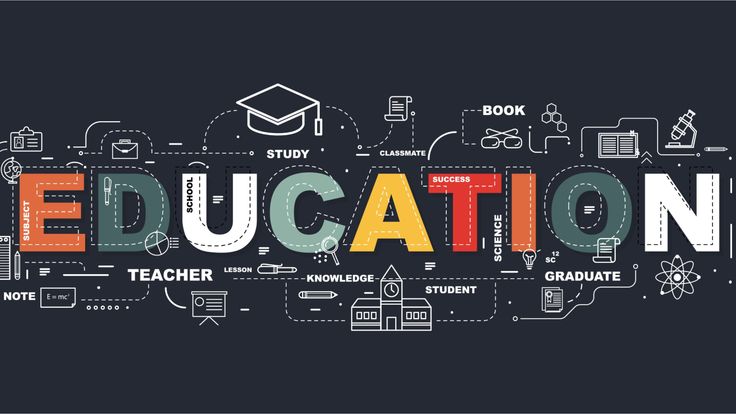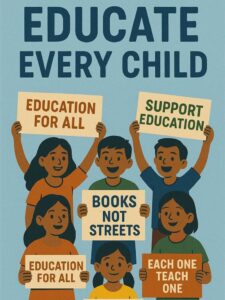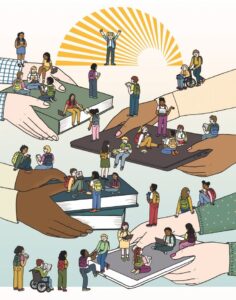
F Zaynah
Not too long ago, if a student wanted to learn something new, they had to search for a book in the library or wait for a teacher’s explanation in class. Today, things are very different. With the internet in our hands, we can learn almost anything through educational websites. These platforms have become the modern classroom, guiding students, teachers, and even adults who simply want to keep learning.

Educational websites are not just convenient they are changing the way we think about education. Let’s take a closer look at why they matter, what types exist, and how they shape our future.
Why Educational Websites Matter?
Life is fast-paced, and not everyone can sit in a classroom all the time. Educational websites solve this problem by offering lessons anytime and anywhere. A student in a small village can now access the same information as someone in a top city school. That is the real power of these platforms they break barriers and give equal chances to everyone.

Another reason they matter is flexibility. If someone doesn’t understand a topic, they can pause, rewind, or repeat a lesson as many times as needed. In a real classroom, this isn’t always possible.
Free Platforms for Students
The internet is full of free resources that make learning possible for all. Websites like Khan Academy give step-by-step lessons in subjects like math and science. Children often enjoy websites like National Geographic Kids, where they learn about animals and the environment through fun games and videos.
These free websites are lifesavers for families who cannot afford extra classes or expensive books. They prove that quality education doesn’t always have to come with a price tag.
Free vs. Paid: Which is Better?
While free platforms are amazing, paid websites also have their place. Platforms such as Udemy or Skill Share charge a fee but provide structured courses, certificates, and expert support. For someone looking to build a career or improve professional skills, investing in these platforms can be worthwhile.
The truth is, both free and paid platforms serve different needs. Free websites are great for everyday learning, while paid ones are often chosen by people who want to achieve career goals.
School-Level Learning Made Easy
School students benefit a lot from online platforms. Websites like BrainPOP or Byju’s explain tough subjects through videos and quizzes. Instead of just reading plain text, students see animations and interactive lessons that make learning more enjoyable.
These sites are also a huge help during exam time. If a student misses a lesson or forgets a concept, they can revise online and feel more confident before tests.
Higher Education and Skill Development
For older students and professionals, there are websites that focus on higher learning. Platforms like Coursera or edX partner with universities to provide online courses in fields such as computer science, business, and medicine.
Then there are sites like LinkedIn Learning, which help people improve soft skills such as leadership, time management, or communication skills that matter in real workplaces.
Learning New Languages
Language websites are among the most popular today. Platforms like Duolingo and Babbel allow learners to practice speaking, listening, and writing in different languages. They are designed to feel like games, so learners don’t lose interest.
Instead of expensive tutors, people can now learn French, Spanish, or even Japanese by spending just 10 minutes a day on these websites.
STEM and Practical Learning
STEM (Science, Technology, Engineering, and Math) subjects can be tough, but websites make them less intimidating. Brilliant.org explains complex math and science problems in simple steps, while Codecademy teaches coding in an easy, interactive way.
The best part is that these websites give real world examples, so students don’t just memorize they actually understand and apply the knowledge.
Creativity Through Websites
Education is not only about exams; it is also about creativity. Websites such as Skillshare and Canva Learning allow people to learn art, music, and design. A teenager can learn to play the guitar online, while another might explore graphic design and photography.
These platforms give learners the chance to discover hidden talents and even turn hobbies into careers.
Exam and Test Preparation
Students preparing for big exams like IELTS, SATs, or university entrance tests often rely on websites like Magoosh or PrepScholar. These platforms offer practice tests, sample questions, and study plans.
For many, they serve as virtual tutors available anytime and guiding them step by step toward success.
How Teachers Benefit
Educational websites are not just for learners. Teachers use them too. Many platforms provide free lesson plans, worksheets, and classroom activities. Websites such as Teachers Pay Teachers even let educators share their own materials with others.
This creates a community where teachers help one another while also discovering new ways to make lessons interesting for their students.
The Good and the Not-So-Good
Like everything else, educational websites have both strengths and weaknesses.
Advantages Include:
Disadvantages include:
Some websites may not always provide accurate content
The key is balance using websites as support, not as the only form of education.
The Future of Educational Websites
Looking ahead, the future seems even more exciting. Artificial intelligence (AI) is already helping websites create personalized lessons for students. If someone struggles with a topic, the system suggests more exercises for that exact weakness.
Virtual reality (VR) is also entering education, letting students explore places or concepts they could never experience in real life such as ancient cities, the human body, or the solar system.
This shows that education will not only be about reading and writing but also about experiencing and interacting.
Conclusion
Educational websites are no longer just a side tool; they are becoming an essential part of learning. From children practicing spelling games to adults mastering new skills, these platforms touch every stage of education.

While traditional classrooms remain important, the internet has made learning limitless. With the right use of these websites, education can be more accessible, creative, and exciting for generations to come.